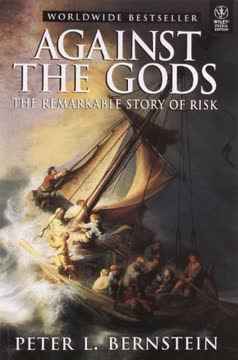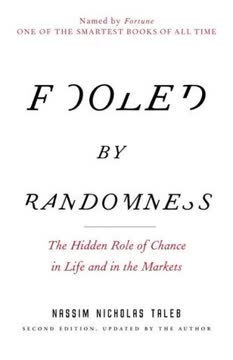Key Takeaways
1. Risk mitigation is the essence of investment management
"The essence of investment management is the management of risks, not the management of returns."
Fundamental premise. Risk mitigation is not just a defensive strategy; it's the core of successful investing. By focusing on managing downside risk, investors can protect their capital base, which is crucial for long-term wealth accumulation.
Key principles:
- Take care of the losses; the profits will take care of themselves
- A small loss is better than a big loss
- Don't predict; stay agnostic to market movements
Effective risk mitigation allows investors to take more calculated risks, potentially leading to higher returns over time. This approach aligns with Benjamin Graham's concept of "margin of safety," which emphasizes protecting capital while seeking growth opportunities.
2. The geometric average return, not arithmetic, determines wealth
"Your raw, linear returns are a lie; your true returns are crooked."
Compounding effect. The geometric average return, which accounts for the multiplicative nature of returns over time, is the true determinant of wealth accumulation. Unlike the arithmetic average, which can be misleading, the geometric average reflects the actual growth rate of an investment.
Key concepts:
- Compound Annual Growth Rate (CAGR) is based on geometric average
- Arithmetic average overestimates actual returns in volatile markets
- Logarithmic returns provide a more accurate picture of wealth growth
Understanding the difference between arithmetic and geometric returns is crucial for evaluating investment performance and making informed decisions. Investors should focus on strategies that maximize the geometric average return, even if it means accepting a lower arithmetic average.
3. Safe havens should be cost-effective, raising wealth while lowering risk
"Cost-effective risk mitigation can and should be thought of as being additive to portfolios over time—with the right risk mitigation, that is."
Positive net effect. Effective safe havens should not only protect against downside risk but also contribute positively to overall portfolio performance. This challenges the conventional wisdom that risk mitigation always comes at the cost of reduced returns.
Characteristics of cost-effective safe havens:
- Raise the geometric average return of the portfolio
- Provide protection during market downturns
- Have a low cost relative to their protective benefits
The goal is to find safe haven strategies that offer a positive net portfolio effect, meaning their geometric effect (protection against losses) outweighs their arithmetic cost (reduction in average returns). This approach allows investors to simultaneously reduce risk and increase long-term wealth.
4. The Petersburg merchant trade: Insurance can be profitable for both parties
"The granting of the insurance contract represents a gain (measured in their own frameworks) for both the merchant and the insurer—it's a win–win, mutually advantageous arrangement."
Counterintuitive benefit. The Petersburg merchant trade demonstrates how insurance, even when priced above its actuarial value, can benefit both the insured and the insurer. This concept challenges the zero-sum perception of insurance transactions.
Key insights:
- Insurance can raise the geometric average return for the insured
- The insurer benefits from the positive expected value of premiums
- The apparent cost of insurance is offset by its protective value
This principle extends beyond traditional insurance to financial risk mitigation strategies. It shows that paying for protection can be economically rational, even when it appears costly in the short term, due to its effect on long-term compounding of wealth.
5. Bernoulli's logarithmic curve: Avoid plunging over financial falls
"Profit is finite. Risk is infinite. You need to avoid plunging down the logarithmic Bernoulli Falls!"
Asymmetric impact. Bernoulli's logarithmic curve illustrates the disproportionate impact of losses on wealth compared to gains. This concept is fundamental to understanding the importance of downside protection in investing.
Implications of the logarithmic curve:
- Large losses require even larger gains to break even
- Small, consistent gains compound more effectively than volatile returns
- Avoiding significant drawdowns is crucial for long-term wealth accumulation
The logarithmic curve serves as a visual reminder of the importance of risk management. It emphasizes that preserving capital during market downturns is often more important for long-term success than capturing all potential upside.
6. Nietzsche's eternal return: Invest as if you'll relive your choices infinitely
"Do you desire this once more and innumerable times more?"
Existential imperative. Nietzsche's concept of eternal return, applied to investing, encourages making decisions as if you would have to live with their consequences repeatedly for eternity. This perspective shifts focus from short-term gains to long-term, sustainable investment strategies.
Applying eternal return to investing:
- Consider the long-term implications of each investment decision
- Focus on strategies you'd be comfortable repeating indefinitely
- Avoid high-risk, speculative investments that could lead to regret
This philosophical approach encourages investors to think more carefully about risk and to develop strategies they can confidently maintain over long periods. It aligns with the idea of investing in a way that allows you to sleep well at night, knowing you've made prudent choices.
7. The safe haven frontier: Explosive payoffs require smaller allocations
"The more explosive the crash payoff in general, the smaller the safe haven allocation needed to prevent plunging over Bernoulli Falls."
Efficiency principle. The safe haven frontier illustrates that the most cost-effective risk mitigation strategies are those with explosive payoffs during market crashes, allowing for smaller allocations and thus lower overall portfolio costs.
Characteristics of efficient safe havens:
- High convexity to market crashes
- Low cost during normal market conditions
- Ability to provide significant protection with small allocations
This concept explains why strategies like tail-risk hedging can be more effective than traditional diversification. By allocating a small portion of the portfolio to assets with explosive crash payoffs, investors can achieve substantial downside protection while maintaining exposure to market growth.
8. Diversification is not a free lunch; it dilutes risk and returns
"Diversification is fundamentally a dilution of risk, not a solution to risk."
Myth debunked. While diversification is often touted as "the only free lunch in finance," it actually comes with significant trade-offs. By spreading investments across multiple assets, investors may reduce specific risks but also dilute potential returns.
Limitations of diversification:
- Can lead to lower overall returns in exchange for lower volatility
- May not provide adequate protection during systemic market crashes
- Often results in "diworsification" rather than true risk mitigation
Instead of relying solely on diversification, investors should seek more targeted risk mitigation strategies that address specific portfolio vulnerabilities. This might include combining concentrated positions in high-conviction investments with tailored hedging strategies.
9. Gold and bonds: Warping payoffs challenge safe haven status
"Either the bond's payoff profile is just extremely noisy from moment to moment and decade to decade, or something is acting on it to warp it."
Dynamic nature of safe havens. Traditional safe havens like gold and bonds have shown inconsistent performance over time, challenging their status as reliable risk mitigation tools. Their effectiveness can vary significantly depending on economic conditions and market regimes.
Factors affecting safe haven performance:
- Changing inflation and interest rate environments
- Shifts in monetary policy and central bank actions
- Evolution of global economic and geopolitical landscapes
Investors should be cautious about relying too heavily on any single asset or strategy as a safe haven. Instead, they should regularly reassess the effectiveness of their risk mitigation approaches and be prepared to adapt to changing market conditions.
10. Falsification in investing: Learn from refuted strategies
"Knowledge progresses through the body count of refuted theories."
Scientific approach. Applying the principle of falsification to investing encourages continuous learning and improvement. By actively seeking to disprove investment theories and strategies, investors can refine their approaches and avoid costly mistakes.
Benefits of falsification in investing:
- Helps identify and eliminate ineffective strategies
- Encourages critical thinking and skepticism
- Promotes adaptation to changing market conditions
Investors should regularly test their assumptions and be willing to abandon strategies that don't hold up to scrutiny. This approach leads to more robust and effective investment methodologies over time.
11. Amor fati: Love your fate by getting every possible path right
"To love any fate, however the die lands, is not resignation. No, this is a call to alter that fate—not the die itself, but its effect—such that we can declare, 'Thus I willed it!'"
Embracing uncertainty. Amor fati, or the love of one's fate, applied to investing means designing strategies that perform well across a wide range of potential outcomes. This approach acknowledges the inherent unpredictability of markets while striving for robustness.
Implementing amor fati in investing:
- Develop strategies that are resilient to various market conditions
- Focus on process rather than short-term outcomes
- Cultivate a mindset that embraces market challenges as opportunities
By adopting this philosophy, investors can reduce emotional stress and make more rational decisions. It encourages a long-term perspective and helps maintain discipline during market turbulence, ultimately leading to better investment outcomes.
Last updated:
FAQ
What's "Safe Haven: Investing for Financial Storms" about?
- Purpose of the book: "Safe Haven: Investing for Financial Storms" by Mark Spitznagel explores strategies for investing in a way that mitigates risk during financial downturns while still aiming to increase wealth over time.
- Focus on risk mitigation: The book emphasizes the importance of cost-effective risk mitigation, challenging the conventional wisdom that risk mitigation necessarily comes at the expense of returns.
- Philosophical and practical approach: It combines philosophical insights, particularly from Nietzsche, with practical investment strategies to provide a comprehensive guide to safe haven investing.
Why should I read "Safe Haven: Investing for Financial Storms"?
- Unique perspective on investing: The book offers a fresh perspective on investing by focusing on risk mitigation as a means to enhance wealth, rather than just a defensive measure.
- Comprehensive framework: It provides a logical and practical framework for understanding and implementing safe haven strategies, making it valuable for both novice and experienced investors.
- Philosophical insights: The integration of philosophical concepts, such as Nietzsche's eternal return, adds depth to the discussion of investment strategies, encouraging readers to think critically about their approach to risk.
What are the key takeaways of "Safe Haven: Investing for Financial Storms"?
- Cost-effective risk mitigation: The book argues that risk mitigation should not be seen as a trade-off against wealth creation but as a strategy that can enhance returns over time.
- Importance of geometric returns: It emphasizes the significance of geometric average returns over arithmetic averages, highlighting the impact of compounding on wealth.
- Holistic investment approach: The book advocates for a holistic view of investing, where the interactions between different components of a portfolio are considered to maximize overall returns.
What is the "Petersburg Merchant Trade" concept in the book?
- Insurance analogy: The Petersburg Merchant Trade is an analogy used to explain how insurance can be a cost-effective risk mitigation strategy, even if it appears costly in the short term.
- Geometric vs. arithmetic returns: It illustrates how the geometric effect of risk mitigation can outweigh its arithmetic cost, leading to higher overall returns.
- Strategic risk management: The concept underscores the importance of strategic, rather than tactical, risk management in investing.
How does Mark Spitznagel define a "safe haven" in investing?
- Risk mitigation focus: A safe haven is defined as an investment that mitigates risk, particularly during financial downturns, while ideally enhancing wealth over time.
- Payoff characteristics: Safe havens are characterized by their payoff profiles, which should provide protection against significant losses in a portfolio.
- Variety of forms: Safe havens can take various forms, such as insurance, store-of-value assets, or alpha strategies, each with different payoff dynamics.
What is the "Safe Haven Frontier" mentioned in the book?
- Spectrum of performance: The Safe Haven Frontier represents a spectrum of safe haven payoff shapes that can provide increasing cost-effectiveness in risk mitigation.
- Cost-effectiveness line: It delineates the edge of the envelope along which safe havens can push to achieve maximum efficiency in mitigating risk.
- Strategic guidance: The frontier serves as a guide for investors to identify and implement the most cost-effective safe haven strategies.
What role does Nietzsche's philosophy play in "Safe Haven: Investing for Financial Storms"?
- Eternal return concept: Nietzsche's idea of the eternal return is used as a thought experiment to emphasize the importance of getting investment decisions right, as if they will be repeated indefinitely.
- Life affirmation: The book encourages investors to adopt a mindset of "amor fati," or love of one's fate, to embrace the outcomes of their investment decisions.
- Philosophical depth: Nietzsche's philosophy adds a layer of depth to the discussion of risk and investing, encouraging readers to think critically about their approach to financial decisions.
How does the book address the "great dilemma of risk"?
- Catch-22 of risk: The book discusses the dilemma where taking too much risk can lead to losses, while taking too little can result in missed opportunities for wealth creation.
- Solution through risk mitigation: It proposes that the solution lies in cost-effective risk mitigation, which can enhance returns while managing risk.
- Strategic approach: The book advocates for a strategic, rather than tactical, approach to risk management, focusing on long-term wealth growth.
What is the significance of geometric average returns in the book?
- Compounding impact: Geometric average returns are emphasized for their ability to reflect the true impact of compounding on wealth over time.
- More accurate measure: The book argues that geometric averages provide a more accurate measure of investment performance than arithmetic averages.
- Focus on growth rate: By focusing on the growth rate of wealth, investors can better understand the long-term effects of their investment decisions.
What are the best quotes from "Safe Haven: Investing for Financial Storms" and what do they mean?
- "Of all that is written, I love only what a person hath written with his blood." This Nietzsche quote underscores the importance of deeply understanding and committing to one's investment strategies.
- "Don't lose money." This Buffett-inspired principle highlights the critical importance of risk management in investing.
- "A ship in harbor is safe, but that is not what ships are built for." This quote encourages investors to embrace risk strategically, rather than avoiding it entirely.
How does the book differentiate between tactical and strategic investing?
- Tactical investing: Tactical investing involves making short-term predictions and adjustments to a portfolio, often requiring precise timing and forecasting.
- Strategic investing: Strategic investing focuses on long-term goals and maintaining a consistent approach to risk management, without relying on predictions.
- Emphasis on strategy: The book advocates for strategic investing as a more reliable and effective approach to managing risk and enhancing returns.
What is the "Kelly Criterion" and how is it applied in the book?
- Betting strategy: The Kelly Criterion is a formula used to determine the optimal size of a series of bets to maximize the geometric average of wealth.
- Application to investing: The book applies the Kelly Criterion to investing, suggesting that it can help investors determine the optimal allocation to safe havens.
- Balancing risk and reward: By using the Kelly Criterion, investors can balance the trade-off between risk and reward to achieve the best long-term outcomes.
Review Summary
Safe Haven received mixed reviews, with praise for its unique perspective on risk mitigation and investing philosophy. Readers appreciated the mathematical concepts and challenging of conventional wisdom. However, some found the writing style difficult and lacking practical examples. Critics noted the absence of specific investment advice, while supporters viewed this as intentional, encouraging readers to think independently. The book's complexity divided opinions, with some finding it enlightening and others struggling to grasp its concepts. Overall, it's considered a thought-provoking read for experienced investors seeking a fresh approach to portfolio management.
Similar Books










Download PDF
Download EPUB
.epub digital book format is ideal for reading ebooks on phones, tablets, and e-readers.





